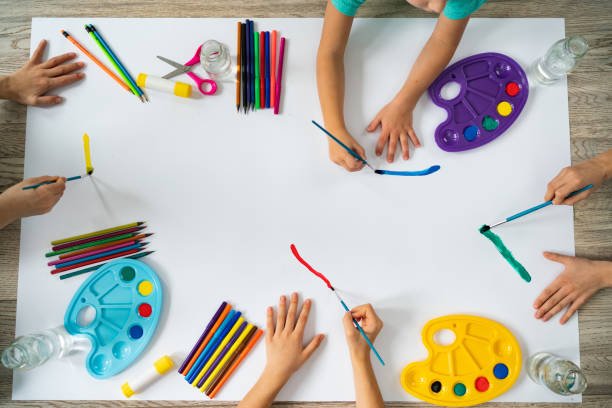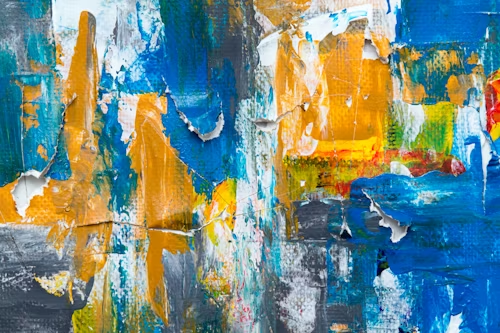Simple Watercolor Painting Ideas for Beginner Artists
One of the most amusing and user-friendly paints that a beginner can use and flourish his creativity is watercolor painting. It has soft textures and flowing colors which give room for much effect, all through by using the least possible materials. If you look forward to getting started with watercolor painting for the first time, then it will be useful for simple and exciting ideas concerning your artistic endeavor.
Why Watercolor Painting?
The watercolor painting is highlighted with transparency and fluidity. Watercolor is not at all like acrylic or oil paints, which offers a more forgiving experience, allowing artists to layer and blend colors easily. This becomes the perfect medium for a novice because it suggests experimentation without getting pressured through perfection.
Things Required to Get Started with Watercolor Painting:
Before you start your first project, ensure you have the right materials. What you need to get:
Watercolor Paper:
Choose paper that is either thick and absorbent, such as Cold Press or Supper Press. These can both survive getting wet without warping.
Brushes:
Round watercolor brushes are good for general washes and detailed work.
Watercolor Paints:
A minimum working palette of watercolors and different types.
Palette:
A palette or some flat surface for experimenting and mixing on.
Basic Watercolor Painting Ideas for Beginners
1. Floral Patterns
Flowers are one of the best subjects for a novice watercolor artist. These delicate organic curves and bright colors of the petals with soft soothed blending and gradual transitions would make them an ideal practice for an amateur artist. Start by practicing loose strokes in simple flowers like daisies or tulips and let the colors bleed into each other through gentle transitions so you end up with a soft, watercolor look.
2. Sunsets
Colors blending over sunsets is fabulous. Begin a yellow wash at the bottom and allow it to fade into orange, pink, and purple as it moves up. Gradients are also ideal for sunsets-a basic watercolor technique.
3. Simple Landscapes
Landscapes can also be a fantastic subject for learners. Be it a seascape or a meadow, start the sky with loose broad strokes and then layer in details like trees or hills with your darker colors. You’ll have fun practicing layering in this medium of watercolor art.
4. Abstract Shapes
For beginners, abstract shapes would be a good way to get used to water painting without getting too focused on specific subjects. Paint circles, squares, or just random designs, letting colors mix and blend on the paper. In that way, you will be getting a sensation of how water and paints can work with each other and getting insight into how to control the medium
5. Geometric Patterns
If you like order, then you can paint geometric designs in the form of triangles, squares, or diamonds. These designs are simple yet very beautiful and facilitate making precise strokes with the brush. You can experiment with color and layering for a variety of designs.
6. Dripping Water
Water droplets are a great, simple watercolor drawing idea that also looks incredibly cool. Paint a light wash of color for your background and, once it is dry, paint tiny circles with darker edges using a smaller brush. Add just a tiny white highlight to get the illusion of real water droplets.
Key Techniques in Watercolor
To become a better artist, the following can be helped along with learning a few simple watercolor techniques:
Wet-on-Wet:
Wet paint is applied to a wet surface. This blends and spreads colors beautifully in a painting. It works particularly well for painting skies or oceans or creating abstract backgrounds.
Wet-on-dry:
If you let wet paint drip onto dry paper, the edges are very sharp. You can use this technique to create fine details and sharp lines within your painting.
Layering:
Here, the transparency of watercolor helps you reach different levels and add several details to your artwork by layering light washes of color in the least pigmentated from the top to more pigment-rich on the bottom. Use base colors as shadows against the heavier lines in the top layers.
Drybrush:
Using a drybrush with minimal water, you can achieve textured strokes in the painting, especially useful when painting finer details such as grass or tree branches.
Conclusion
Watercolors are easy for the beginner artist to explore. Using minimal tools and a simple set of techniques, you will be able to produce great works of art. You can decide to paint flowers, landscapes, or abstract designs. In short, watercolors are all about experimenting while enjoying itself.
Skriblbox, a company that produces artistic supplies like high-quality watercolor paper and paints, will also help you execute these easy watercolor painting ideas. Time and practice will make you grow and figure out the next use of creativity through water-coloring. So take up your brush, dip it in some water, and see what kind of imagination flows from your hands!
Related Posts
Boya Crayons Tutorial for Beginners and Beyond
Easy beginner guide to using Boya crayons with pro SkriblBox tips for smooth coloring.
How to Remove Crayon from Paper (Without Damaging It)
Oh no! Your little artist just left a vibrant crayon masterpiece on an important paper,…
What is Abstract Art? Meaning, Famous Examples & Painting Guide
Not every painting has to look like a perfect portrait or a quiet landscape. Some…




